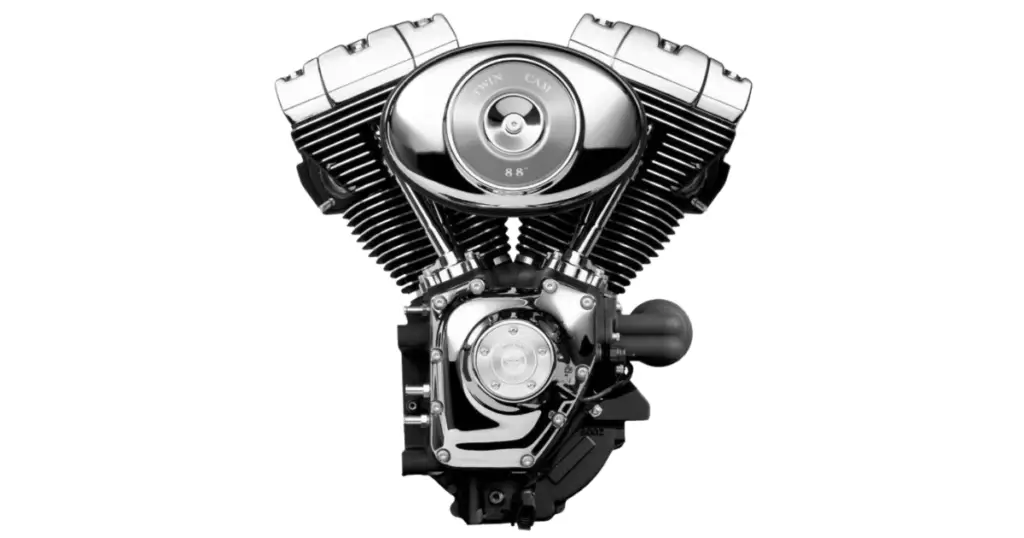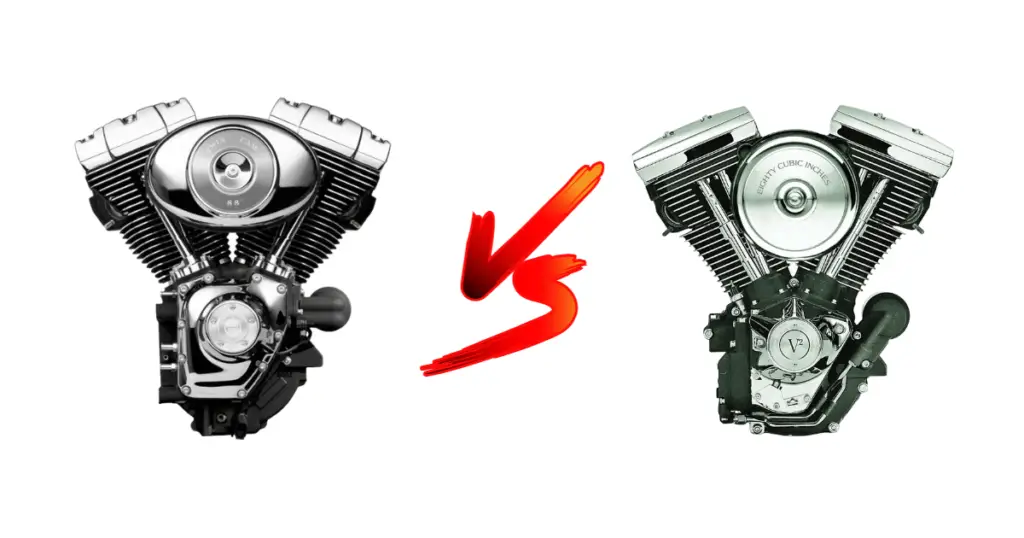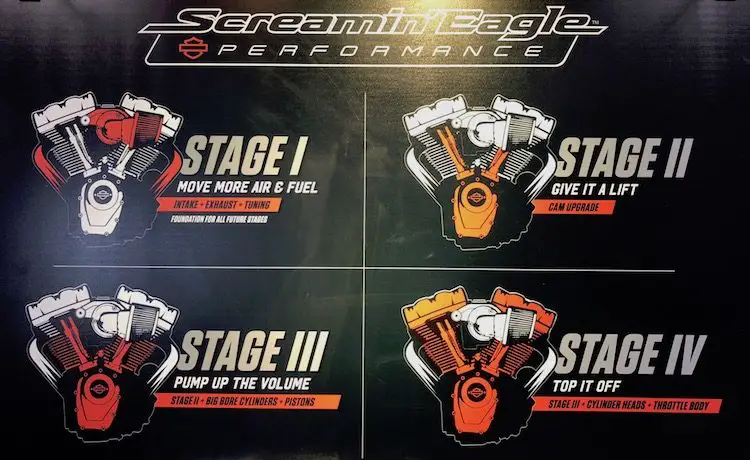Dwelling in the thrilling realm of motorcycling, many enthusiasts have asked, “Is the Twin Cam 88 a good motor?” Well, as your affable guide through this mechanical maze, I’d answer – Yes, and No. Surprised? Let’s clarify.
Affectionately known as the beating heart of certain iconic bikes, the Twin Cam 88 can indeed surprise you with its pulling power and steadfast performance. But then, the question surfaces – “How long will a Twin Cam 88 last?”. Ah, dear riders, herein lies the complexity!
While this motor ticks a lot of the right boxes, its longevity can be a bit tricky, often becoming the ‘elephant in the room’ that no one wishes to address. In our journey today, we’ll dissect every facet of this double-edged discussion, threading through firsthand experiences, insightful anecdotes, and precious data. So, strap in as we embark on an enlightening ride through the intriguing landscapes of the Twin Cam 88 motor’s pros and cons. Peer into the heart of your motorcycle, and let’s learn together.
Read later:
– Best Tuner for Harley 88 ci Engines: An Expert’s Picks
– Finding Best Oil for Harley Davidson Twin Cam Engines (Guide)
– Best Spark Plugs for Harley Davidson Twin Cam: Full Guide
When Was The Twin Cam 88 Introduced?

The Twin Cam 88 was unveiled by Harley-Davidson in 1999. This new engine was the result of several years of research and development, aimed at improving upon the previous Evolution engine. The Twin Cam 88 was initially introduced to power the Dyna and FL touring models. Eventually, it was also used in the Softail models, albeit with some modifications.
Related: Dyna Vs Softail: What’s The Difference?
What Motor Did The Twin Cam 88 Replace?
The Twin Cam 88 replaced the Evolution engine, often referred to as the Evo. The Evo was a highly successful engine that had been in production from 1984. It was lauded for its reliability and power, and is often credited with helping to revive Harley-Davidson’s fortunes during a challenging period. The Evo was a long-stroke engine, known for delivering impressive torque at low revs, making it ideal for Harley’s cruiser models.
How Do They Compare?

Comparing the Twin Cam 88 and its predecessor, the Evolution engine, reveals several key differences. The Twin Cam 88 was designed to be a more powerful and reliable engine. It boasts an increased displacement (1450cc compared to the Evo’s 1340cc), leading to increased power and torque.
In addition, the Twin Cam 88 introduced a twin camshaft design, with each camshaft responsible for one cylinder. This design allowed for greater flexibility in the angles in the cylinder heads and reduced the pressure on the pushrods, leading to less mechanical noise and increased durability.
Despite these improvements, the Twin Cam 88 retained the core characteristics that made Harley engines unique: a 45-degree, air-cooled V-Twin design, and pushrod valve actuation.
Moving forward in time, and diving deeper:
– Twin Cam 88 vs 96: Dual Cam Shootout (What’s Better?)
– Harley 88 vs 96 vs 103: An In-Depth Engine Comparison
Twin Cam 88 Performance Comparison With Its Predecessors
In terms of performance, the Twin Cam 88 outshines its predecessor. It is more responsive, revs faster, and has a broader power range. This increased performance does not come at the expense of the classic Harley riding experience. The Twin Cam 88 still offers a laid-back, torquey ride characteristic of Harley’s cruiser models but with an added punch when needed.
More Performance? Best Cam for 88 Cubic Inch Harley Revealed (+Buying Guide)
Is The Twin Cam 88 Reliable?
Reliability is a significant factor when considering ifthe Twin Cam 88 a good motor or not. One of the primary design goals for the Twin Cam 88 was to create an engine that was more reliable and durable than the Evolution. This goal was achieved through several design changes and improvements. For instance, the Twin Cam 88 features a new oiling system, which ensures cleaner oil in critical engine areas. Additionally, the engine covers were designed to reduce mechanical noise and increase durability.
However, like any mechanical component, the Twin Cam 88 is not completely without issues. One common problem is related to the cam chain tensioners. Over time, these can wear out and need replacement. Timely maintenance, therefore, plays a significant role in the reliability of the Twin Cam 88.
Related: What Harley Twin Cam Years To Avoid: An Exhaustive Guide
How Long Will A Twin Cam 88 Last?
The longevity of a Twin Cam 88 engine depends on various factors. These include maintenance, riding habits, and environmental conditions. However, with regular maintenance and care, a Twin Cam 88 engine can easily last for over 100,000 miles. Some riders have even reported their Twin Cam 88 engines running smoothly after clocking 150,000 miles or more. Regular oil changes, using quality lubricants, and addressing any mechanical issues promptly can significantly extend the lifespan of a Twin Cam 88 engine.
You should also know: Twin Cam 88 Oil Capacity (Fully Explained + Primary)
What Kind of Upgrades Are Available For The Twin Cam 88?
The Twin Cam 88 is a versatile engine that can be upgraded to enhance performance. Harley-Davidson offers various engine performance kits through its Genuine Motor Parts and Accessories division. These upgrades can increase the power and torque of the Twin Cam 88, making it an even more potent motor.
Stage Kits

Harley-Davidson offers several stage kits for the Twin Cam 88. These kits include components like high-flow air cleaners, performance cams, and high-performance exhaust systems.
Exhausts
Replacing the stock exhaust with a performance exhaust can increase horsepower and torque, while also giving the bike a more aggressive sound.
Air Cleaners
A high-flow air cleaner can increase the engine’s air intake, leading to improved performance.
Tuning
Tuning can optimize the engine’s performance by adjusting parameters such as air-fuel mixture and ignition timing. This is typically done with an aftermarket auto tuner, in most cases. There are several options available, at varying price points, but if you like to shoot for the top (I do), I recommend the Thundermax Tuner.
Does The Twin Cam 88 Suffer From Poor Cam Chain Tensioners?
One common issue with the Twin Cam 88 is the potential for wear and failure of the cam chain tensioners. Over time, the tensioners can wear out, potentially leading to engine damage if not addressed promptly. It’s recommended to check the condition of the tensioners regularly and replace them if necessary.
Related: Harley Davidson Twin Cam 88 Cam Chain Tensioner Upgrade Cost
How Does The Twin Cam 88 Stack Up To It’s Bigger Brothers?
Compared to Harley-Davidson’s larger engines, the Twin Cam 88 holds its own. It offers a solid balance of power, torque, and reliability. While it may not have the raw power of some of Harley’s larger engines, the Twin Cam 88’s performance and reliability make it a strong contender in its class.
Read more: Twin Cam vs Milwaukee 8: Harley Motor Shootout
Would I Recommend A Twin Cam 88?
The answer to “is the twin cam 88 a good motor” is a resounding yes! Its blend of power, reliability, and the classic Harley riding experience make it a compelling choice for any cruiser enthusiast. Whether you’re an experienced rider or a newcomer to the Harley family, the Twin Cam 88 is an engine that won’t disappoint.
Read next: Harley Bad Compensator Symptoms Get Revealed